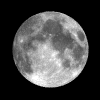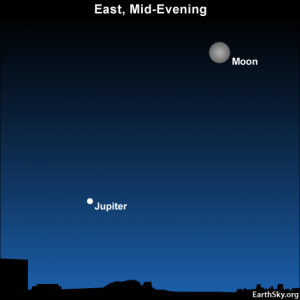Courtesy of EarthSky
A Clear Voice for Science
www.EarthSky.org

 The August 2010 full moon is the smallest, farthest full moon of the year. It lies more than 252,000 miles away, in contrast to the moon’s average distance of about 239,000 miles.
The August 2010 full moon is the smallest, farthest full moon of the year. It lies more than 252,000 miles away, in contrast to the moon’s average distance of about 239,000 miles.
Farthest and closest full moons recur in regular cycles. The closest full moon comes 7 lunar months – in other words, 7 full moons – after the farthest full moon. Then the farthest full moon comes 7 lunar months after the closest full moon.
That means that, for the next 7 lunar months, the full moon will come progressively closer to Earth. Seven full moons after today’s full moon, the closest full moon of the cycle will fall on March 19, 2011. On that date, the full moon will be closer than 222,000 miles.
Then seven full moons after the March 19, 2011 full moon, it will be the farthest full moon all over again on October 12, 2011.
By the way, all the full moons have traditional names – from many different cultures – that coincide with the months of the year. The August full moon is sometimes called the Green Corn Moon.
Can you tell me the full moon names?
Time of full moon today. The moon turns full today – on Tuesday, August 24, 2010 – at 17:05 Universal Time (11:05 a.m. Mountain Daylight Time). For North America, that means the full moon happens during the daylight hours today. At the instant of this year’s August full moon, the moon resides beneath our horizon and below our feet. At this instant on the other side of the world, the full moon shines way up high over the late-night skies of Indonesia, Southeast Asia and Western Australia.
Like any moon at the vicinity of full moon, tonight’s moon will look plenty full in North America as it lights up the nighttime from dusk until dawn.
Written by Bruce McClure
Astronomy Picture of the Day from NASA/JPL
U.S. Naval Observator Astronomical Information center
The York County Astronomical Society
I've never knew this before and i'm happy I know what this is now. Tonight is the night!!